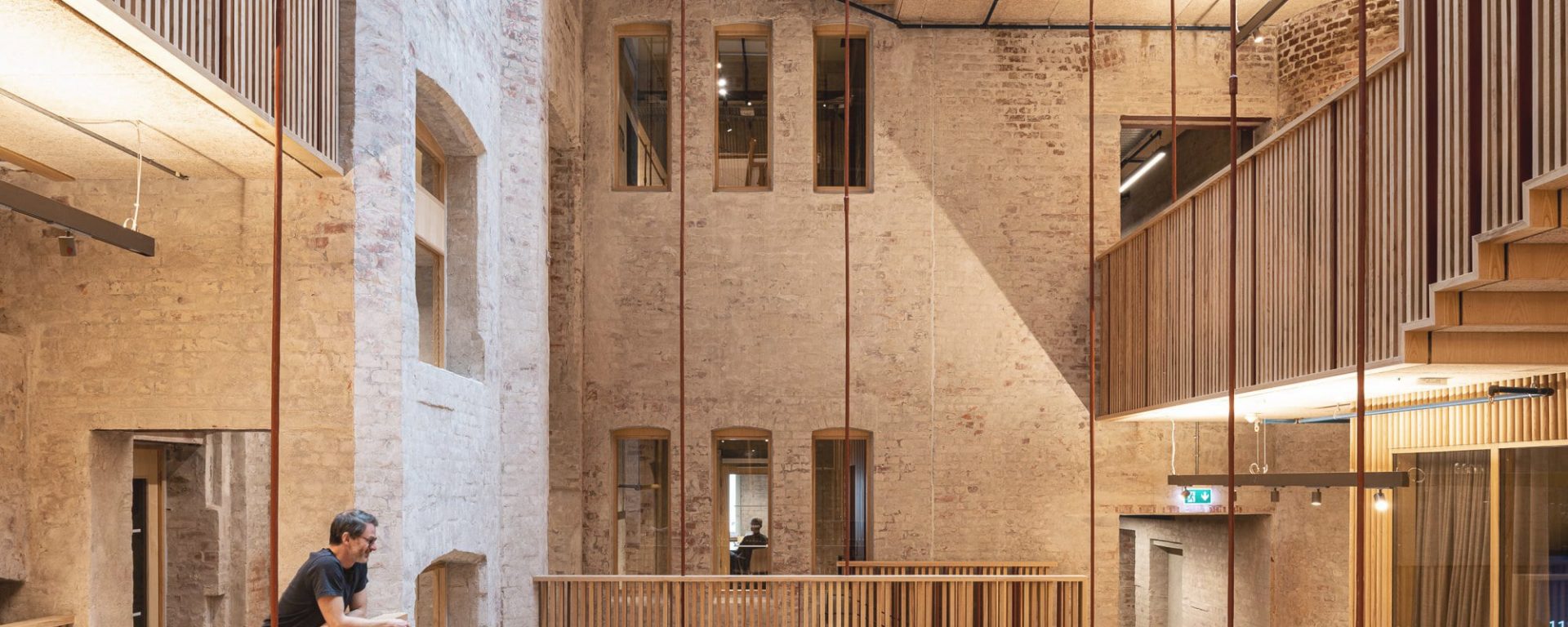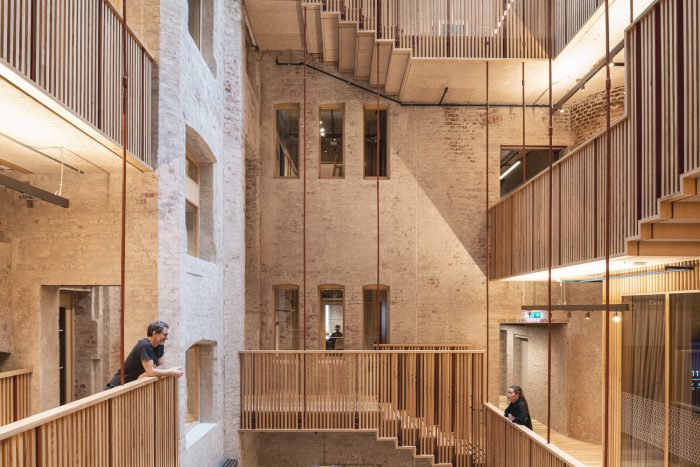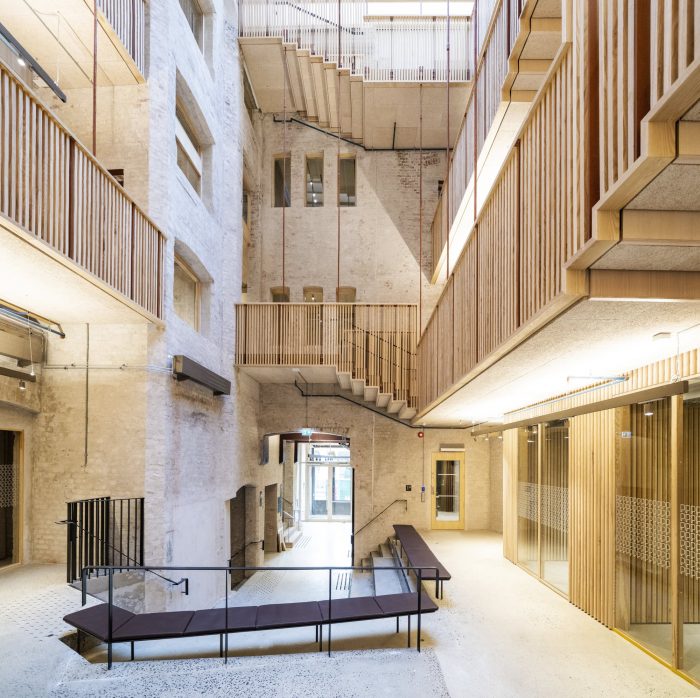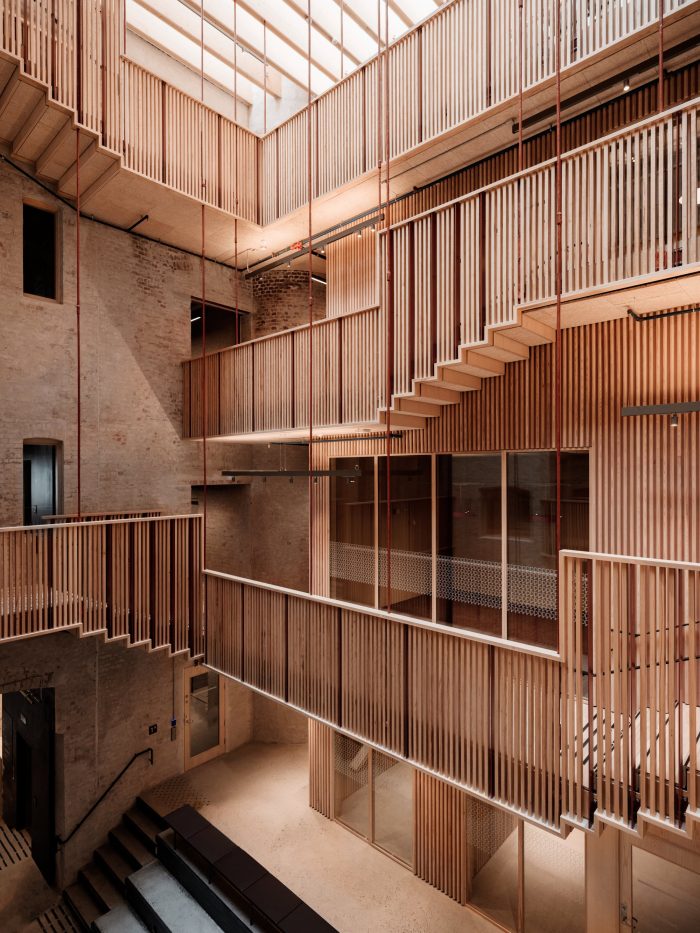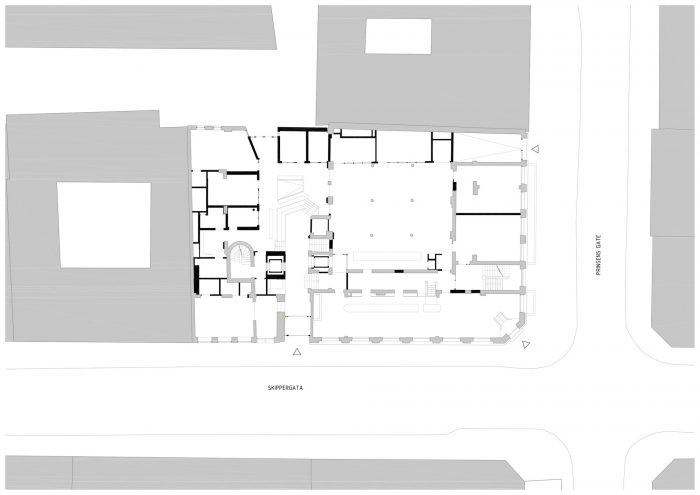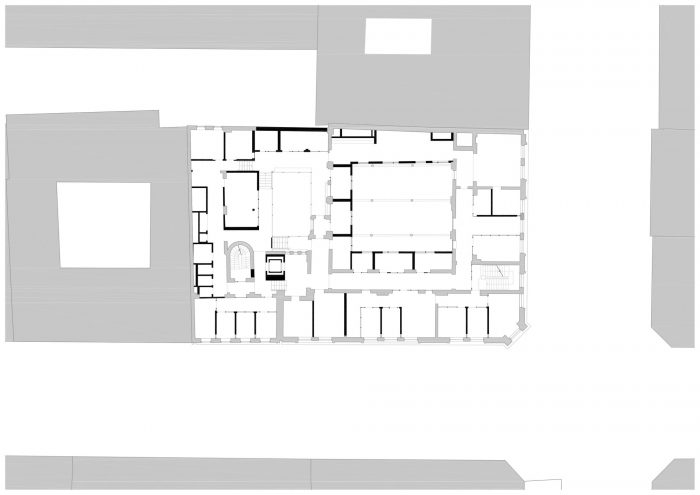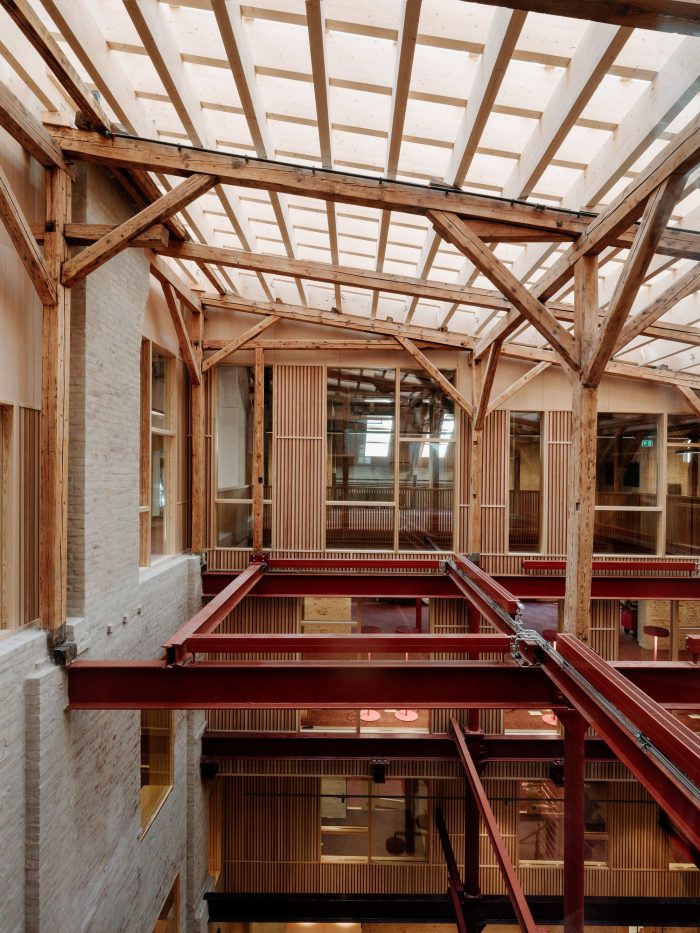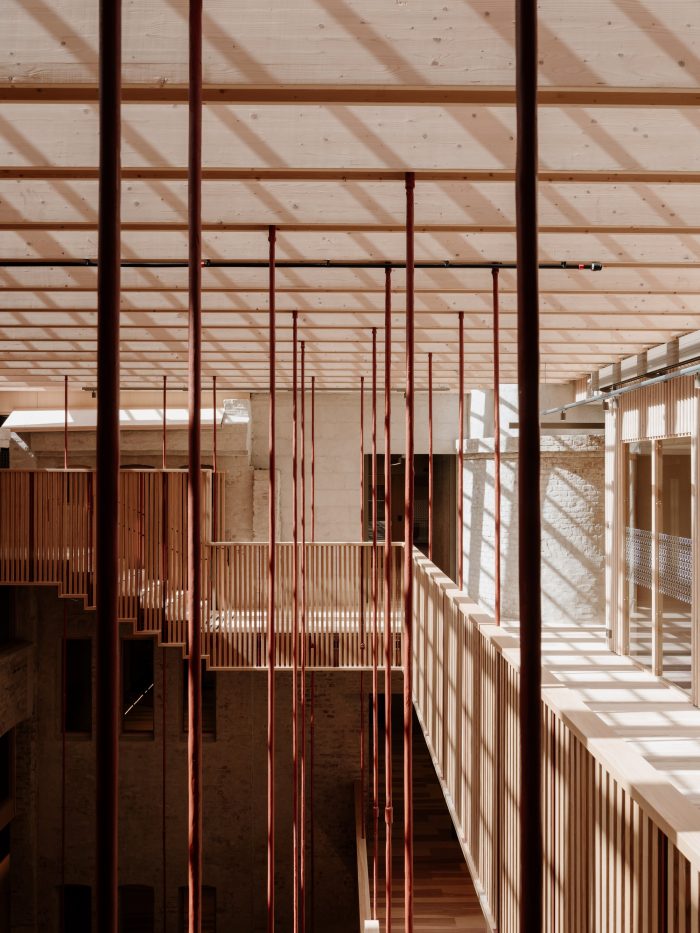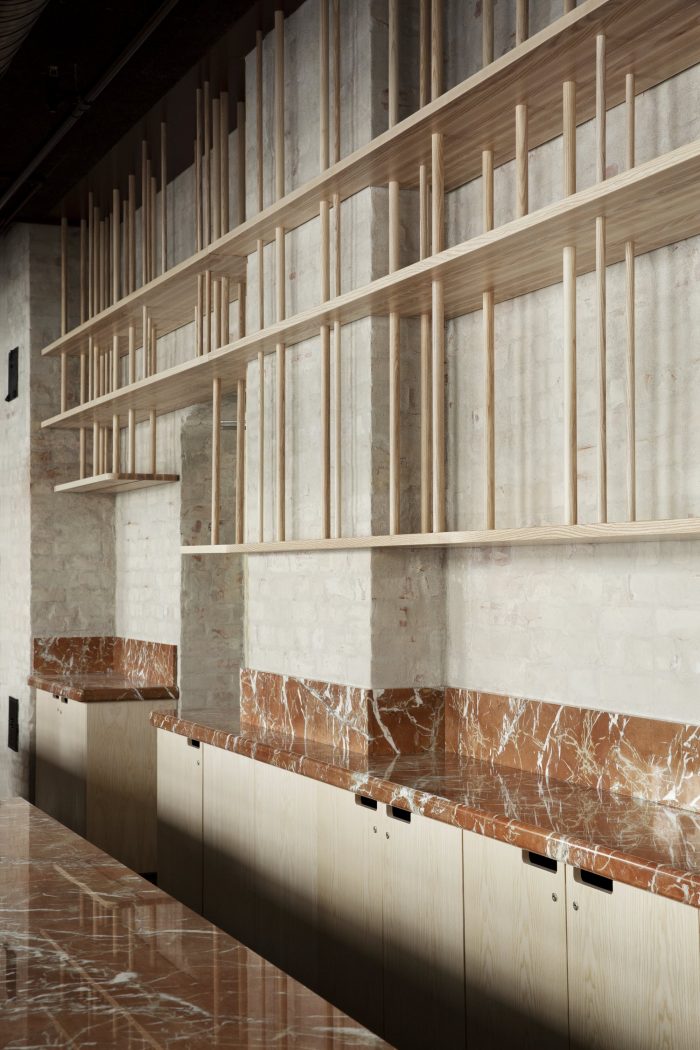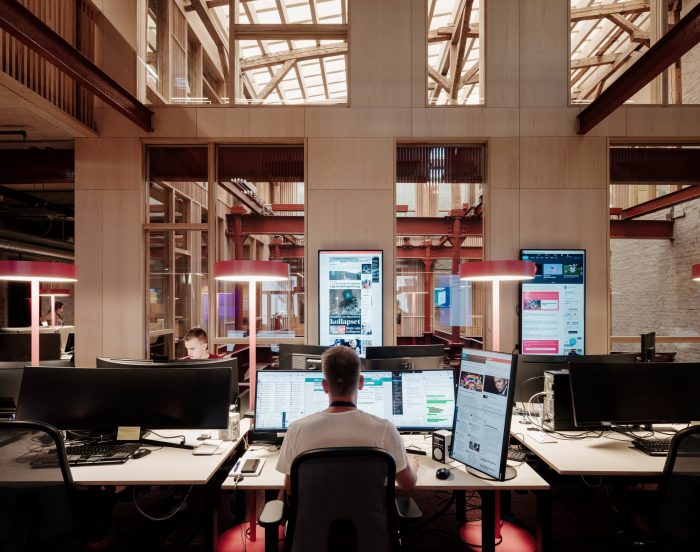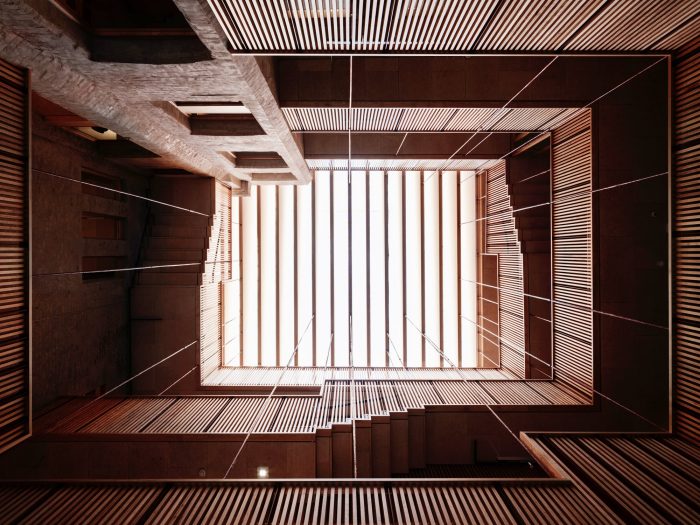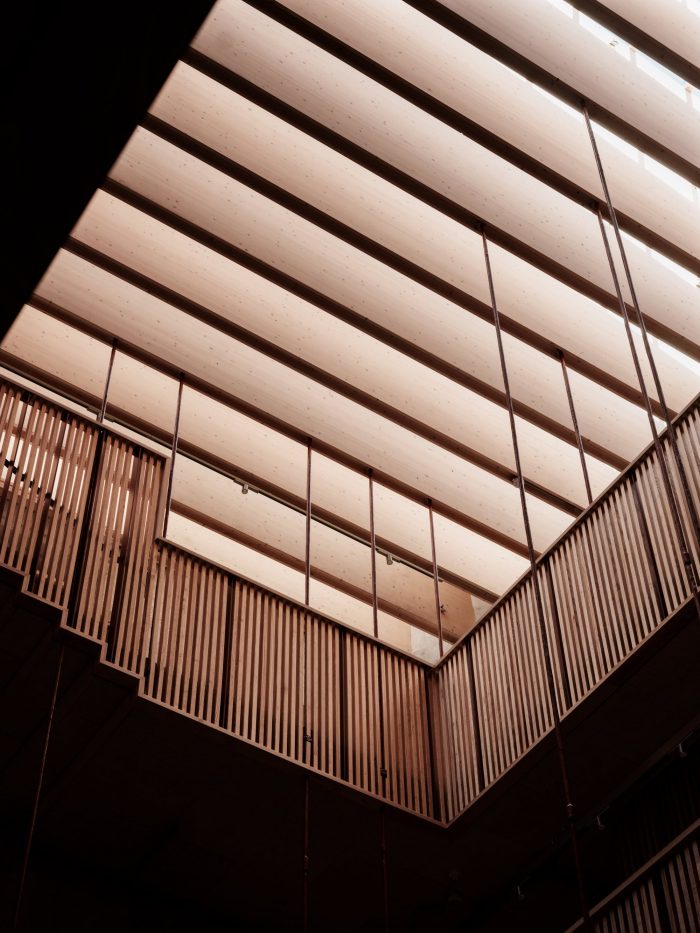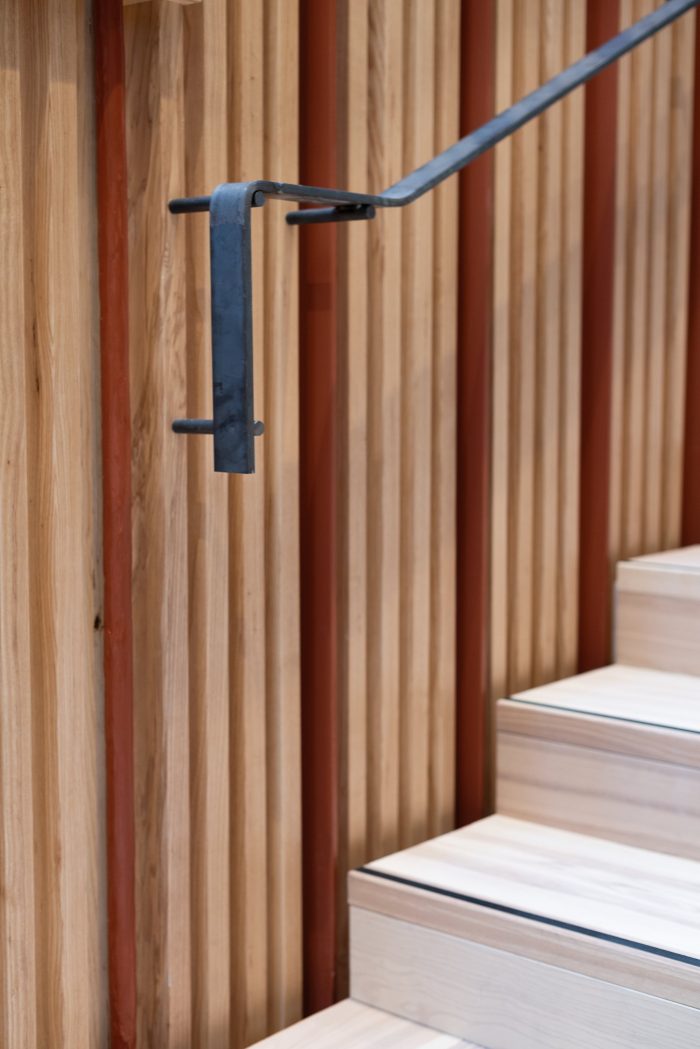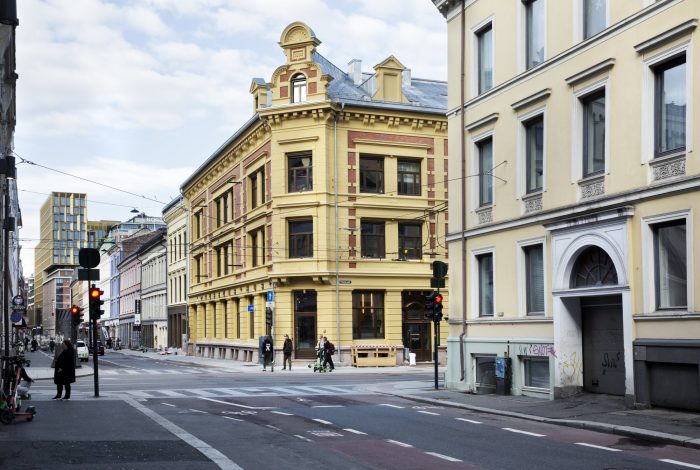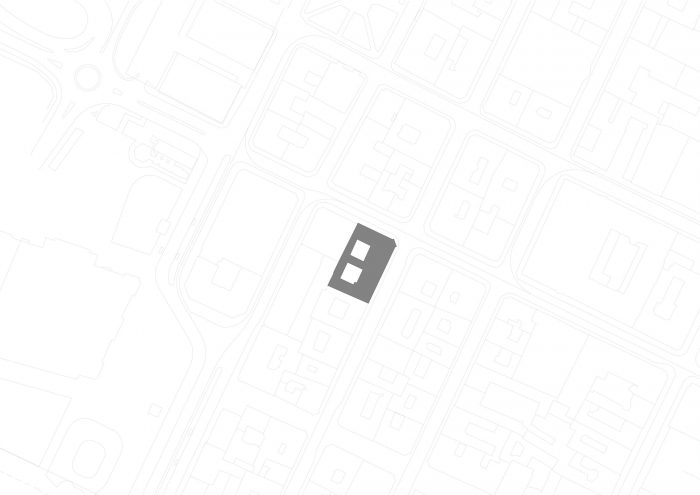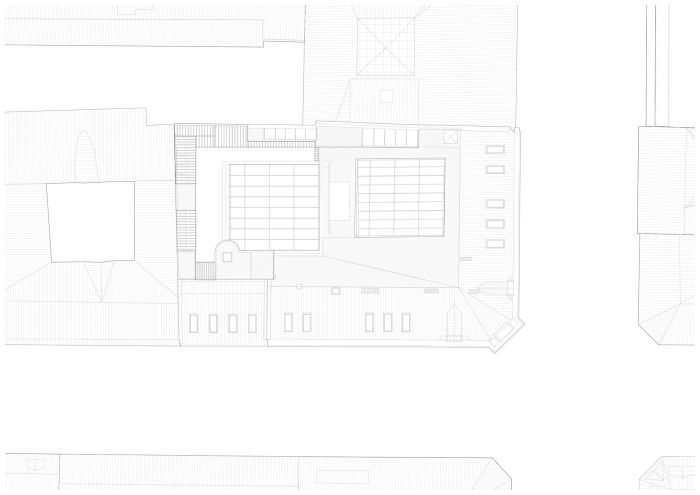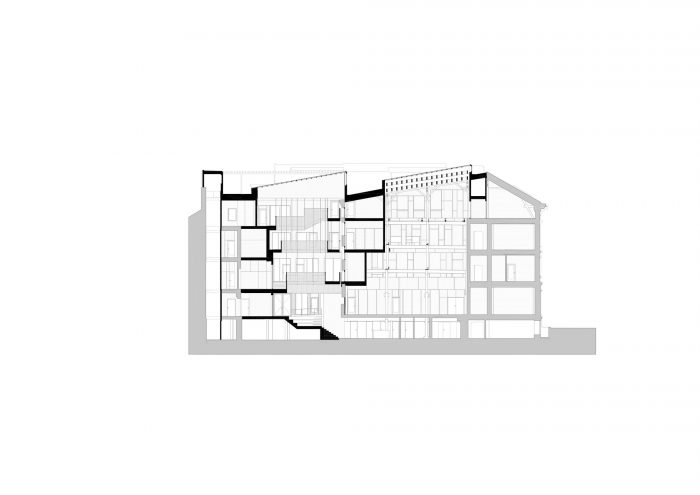挪威新闻之家(Pressens hus)是对奥斯陆市历史中心的两座19世纪80年代的名录建筑的改造。这两座建筑已被改造成一个新的媒体和新闻活动中心,拥有会议厅、工作室、会议和一个咖啡馆/餐厅。它还包括挪威11家著名媒体机构的办公室,可容纳约200人。该设计是在与保护当局的密切对话中完成的,以便在遵守由于这两座建筑的上市而产生的许多限制的情况下找到解决方案。
The Norwegian Press House (Pressens hus) is a transformation of two listed buildings from the 1880s in the historic city center of Oslo. The buildings have been transformed into a new hub for media and press activities, with rooms for conferences, studios, meetings, and a café/restaurant. It also includes offices for 11 prominent media organizations in Norway, with room for approximately 200 people. The design was done in close dialogue with the preservation authorities to find solutions in adherence to the many restrictions due to the listing of both buildings.
该项目围绕两个新建的中庭展开,周围是办公室、社交区、流通区和会议室。这两个中庭为相当深的体量提供了光线,帮助参观者确定方向。入口中庭随着楼层的升高而变大,而礼堂中庭则以相反的方式运作。入口中庭被悬挂在新的夹层木材梁上的桥梁所包围,这些桥梁支撑着玻璃屋顶。
The project is organized around two newly built atriums, surrounded by offices, social zones, circulation, and meeting rooms. The two atriums provide light to the rather deep volume, helping visitors to orientate. The entrance atrium grows larger for each rising floor, while the auditorium-atrium works in the opposite way. The entrance atrium is surrounded by bridges that are suspended from new beams of laminated timber holding the glass roof.
这个中庭有一种轻盈的感觉,并与另一个中庭–礼堂中庭形成对比,后者由旧仓库遗留下来的旧的、列名的钢结构组成。在这里,所有的甲板都被拆除,以将其转变为一个结构和光线的空间。这个中庭上的新玻璃屋顶似乎是从旧结构中长出来的,形成了一个过滤光线的分层木结构。
This atrium has a light feeling and forms a contrast to the other atrium, the auditorium-atrium, which consists of an old, listed steel structure that is a remnant of the old warehouse. Here all the decks were removed to transform this into a space of structure and light. The new glass roof over this atrium appears to grow out of the old structure, creating a layered wood structure that filters the light.
大部分的旧砖结构被保留、修复,并给予精确的切割,为新的流通和技术设备创造房间。由于两座建筑之间的楼层不同,有必要建立一个全新的内部循环,以实现普遍的无障碍。旧的砖墙被仔细地抹上了石灰,使整个室内有一种轻盈的有机品质。旧的(和新的)承重钢结构被赋予了红色调的颜色,以与浅色壁画墙形成对比,但同时又与原来的红砖颜色的闪光点产生共鸣。
Most of the old brick structure has been kept, restored, and given precise cuts to create rooms for new circulation and technical equipment. Due to the different floor levels between the two buildings, it was necessary to establish a completely new internal circulation to achieve universal accessibility. The old brick walls have been carefully plastered with lime to provide a light organic quality throughout the interior. The old (and new) load-bearing steel structures have been given colors in red tones to contrast with the light mural walls, but at the same time resonate with the glimpses of the original red brick color.
新的结构已经用浅灰木建造,以融入其中,但也与原来的材料不同。外墙已被修复并恢复到原来的颜色和装饰。底层是公共的,有一个新的咖啡馆/餐厅面向街道。一个新的、连续的白色混凝土地板作为新的地毯和外面城市地板的延伸,欢迎游客从街上进来并进入建筑。
New structures have been built in light ash wood to blend in, but also differ from the original materials. The façades have been restored and returned to their original color and finishing. The ground floor is public with a new café/restaurant facing the street. A new, continuous white concrete floor functions as a new carpet and extension of the city floor outside, welcoming visitors in from the street and into the building.
Architects: Atelier Oslo, KIMA Arkitektur
Area : 3738 m²
Year : 2022
Photographs :Niklas Hart, NTB, Einar Aslaksen, Inger Marie Grini
BREEAM Consultant : Norconsult
Acoustic Engineering : Brekke & Strand Akustikk
HVAC : Rambøll, Engenius
Electrical Engineering : Multiconsult
Building Physics : Rambøll
Structural Engineering : Rambøll
Main Contractor : Hent
Client : Aspelin Ramm
Fire Engineering : Fokus Rådgivning
City : Oslo
Country : Norway

